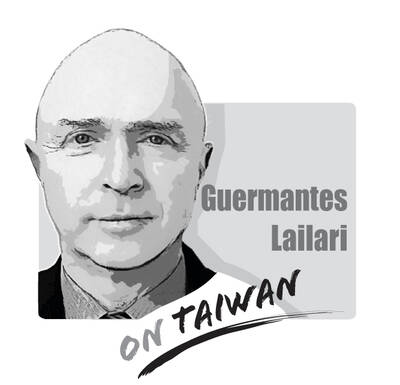At this time of year, many people pause to reflect on the true meaning of philanthropy, asking themselves: What is the best way to give? To whom should I give? And, perhaps most importantly, why should I give?
Fifteen years ago, I published Dead Aid: Why aid is not working and how there is a better way for Africa. I said that government-to-government aid, rather than fueling economic growth, inadvertently harms the very countries it is meant to help. Since then, philanthropists have often sought my advice about their desire to grapple with seemingly intractable challenges, such as extreme poverty or climate change.
In this season of giving, donors should ask themselves twelve key questions when considering how, where and why to give.

Illustration: Constance Chou
The first question is relatively straightforward: What motivates you? Are you looking to spread joy — for example, by supporting the arts — or alleviate suffering by aiding communities affected by war or natural disasters? Both approaches are vital and commendable.
Second, how can you use your time and financial resources effectively? In a world of competing needs, it is not just how much we give, but how we do it that ultimately determines our ability to effect positive change. For example, consider a philanthropist with US$100 million to donate. While allocating the entire amount to improving education could result in better-resourced schools, students might still struggle to attend due to poor health, inadequate transportation or malnutrition.
Recognizing that, the philanthropist might choose to divide the US$100 million among initiatives supporting education, health, food and transportation. Yet splitting the funds equally — allocating US$25 million to each cause — would inevitably dilute the impact. Such an approach might be enough to prevent conditions from getting worse, but it is unlikely to drive transformative change.
The third question to consider is whether to delegate decisionmaking to an established organization or create your own philanthropic foundation. Both strategies come with trade-offs. Delegating enables you to harness the skills and expertise of teams with proven track records, but there is always a risk that the organization you support would fail to achieve its goals — or worse, exacerbate the problem.
Building and managing an organization gives you the freedom to pursue your personal goals and vision. However, over time, that entity’s culture, norms and bureaucratic processes can diverge — and even conflict — with its founding mission. As employees become focused on advancing their own careers, the problem the organization was created to address might become a justification for its existence rather than something to be resolved.
Fourth, what is your time frame? Do you expect immediate results or are you willing to wait for years, perhaps even decades? After all, philanthropy can lay the groundwork for breakthroughs that donors might never live to see.
Fifth, what kind of impact do you want to make? You could spread your resources widely or focus on a single goal — a “moonshot” with a low likelihood of success, such as curing cancer or Alzheimer’s. Although risky, supporting groundbreaking research could have far-reaching consequences.
Sixth, should you collaborate with governments or operate independently? There is a strong case for working with policymakers to provide public goods such as education, healthcare and infrastructure. After all, government budgets dwarf even the wealthiest philanthropist’s resources. For example, while Bill Gates’ estimated net worth is US$105 billion, it amounts to less than six months of California’s annual state budget.
Seventh, how should you approach innovation? Should you harness technology and data to make your organization operate more efficiently and maximize the impact of your giving? Alternatively, you could use your philanthropy to drive the development of revolutionary technologies designed to address societal challenges at scale.
Eighth, should you partner with fellow philanthropists or do it alone? Pooling capital could enhance your impact, but working independently allows you to avoid disagreements over who and what to fund. That said, confronting complex challenges rarely allows for a solitary approach.
Ninth, should your giving be public or private? Both approaches offer unique advantages. Public actions, such as signing The Giving Pledge, facilitate the sharing of best practices, inspire others to support important causes and enable you to compare your efforts to your peers through platforms such as GuideStar.
On the other hand, private giving is arguably the purest form of altruism. “Stealth” philanthropy also provides the freedom for trial and error without the pressure of public scrutiny. Although experimentation is essential for tackling complicated problems, public failures can invite criticism and be dismissed as a waste of money.
Tenth, how should you structure your giving? Financial support can take many forms beyond traditional cash donations. While grant-making remains the most common approach, there are compelling alternatives. Loans, for example, can be structured with extended maturity periods and below-market interest rates, encouraging discipline and accountability by requiring recipients to repay the funds.
Eleventh, should you establish a board of directors to oversee your philanthropic endeavor, and if so, would you reserve seats for family and friends? Opting for a more formal structure — for example, by designating permanent seats for prominent public figures, such as religious leaders or university presidents — can help ensure impartial oversight.
Lastly, what is your exit strategy? Are you planning to wind down your philanthropic efforts by a specific date or would you establish mechanisms to sustain them indefinitely? The “run down the clock” approach is exemplified by businessman and philanthropist Chuck Feeney, who donated billions of US dollars to academic and technical institutions during his lifetime and died last year after successfully giving away his money. By contrast, the Rhodes Trust and Nobel Prize are designed to exist in perpetuity.
Whether you are a wealthy donor, a politician, a CEO or simply a concerned parent, the call to philanthropy resonates with us all. I hope these questions encourage deeper reflection on how to maximize the effectiveness of generosity.
Dambisa Moyo, an international economist, is the author of four New York Times bestselling books, including Edge of Chaos: Why Democracy Is Failing to Deliver Economic Growth — and How to Fix It.
Copyright: Project Syndicate

“History does not repeat itself, but it rhymes” (attributed to Mark Twain). The USSR was the international bully during the Cold War as it sought to make the world safe for Soviet-style Communism. China is now the global bully as it applies economic power and invests in Mao’s (毛澤東) magic weapons (the People’s Liberation Army [PLA], the United Front Work Department, and the Chinese Communist Party [CCP]) to achieve world domination. Freedom-loving countries must respond to the People’s Republic of China (PRC), especially in the Indo-Pacific (IP), as resolutely as they did against the USSR. In 1954, the US and its allies
Mainland Affairs Council Deputy Minister Shen You-chung (沈有忠) on Thursday last week urged democratic nations to boycott China’s military parade on Wednesday next week. The parade, a grand display of Beijing’s military hardware, is meant to commemorate the 80th anniversary of Japan’s surrender in World War II. While China has invited world leaders to attend, many have declined. A Kyodo News report on Sunday said that Japan has asked European and Asian leaders who have yet to respond to the invitation to refrain from attending. Tokyo is seeking to prevent Beijing from spreading its distorted interpretation of wartime history, the report
Indian Prime Minister Narendra Modi arrived in China yesterday, where he is to attend a summit of the Shanghai Cooperation Organization (SCO) with Chinese President Xi Jinping (習近平) and Russian President Vladimir Putin today. As this coincides with the 50 percent US tariff levied on Indian products, some Western news media have suggested that Modi is moving away from the US, and into the arms of China and Russia. Taiwan-Asia Exchange Foundation fellow Sana Hashmi in a Taipei Times article published yesterday titled “Myths around Modi’s China visit” said that those analyses have misrepresented India’s strategic calculations, and attempted to view
When Chinese President Xi Jinping (習近平) stood in front of the Potala Palace in Lhasa on Thursday last week, flanked by Chinese flags, synchronized schoolchildren and armed Chinese People’s Liberation Army (PLA) troops, he was not just celebrating the 60th anniversary of the establishment of the “Tibet Autonomous Region,” he was making a calculated declaration: Tibet is China. It always has been. Case closed. Except it has not. The case remains wide open — not just in the hearts of Tibetans, but in history records. For decades, Beijing has insisted that Tibet has “always been part of China.” It is a phrase